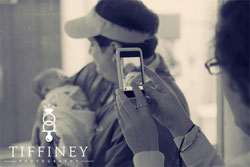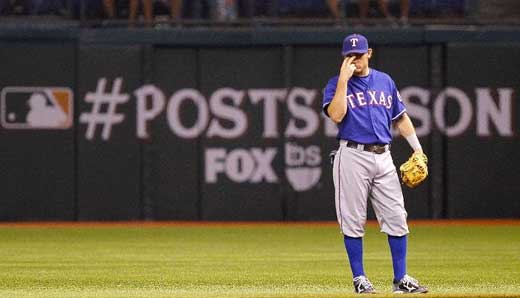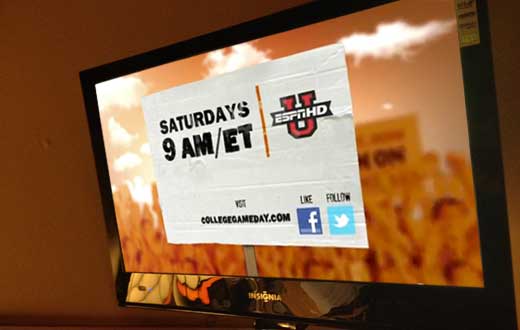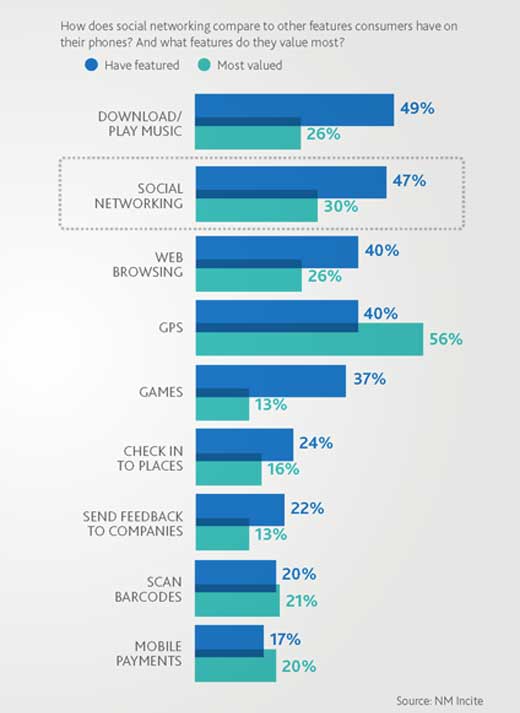I have one question…why must we do “Like” campaigns? Why?
Maybe I am little skeptical of this practice….but I have found more and more organizations creating “Like” campaigns for Facebook and that is it. So here is my next question…what happens after the people “Like” your page? Do you spend the same, if not more, time invested in the longterm conversation as you did trying to get them to click the button.
So many gimmicks, so many ploys, so many promises, so many give aways…but what are people going to “Like” after the “Like” button is clicked? Are you going to push your marketing campaign, your consistent updates that bring no value you the feed? Or do you disappear once they do “Like” your page?
We work so hard on numbers…let’s get those numbers up. But what about the community and the long-term conversation. This is a social space right? Do you overload people with your updates that as soon as they “Like” they click “Hide” the next day?
“Like” campaigns are the same Opt-In campaigns for newsletters and blogs. Get people to give information or commit to receiving content. But is your content “King” or do you build online relationships that lead to digital word-of-mouth?
Do you have a monthly or quarterly newsletter. How did you get the email addresses? So how many people open your newsletter emails? 30%, 20%, 10%, or even 5%? So why are you not getting a larger percentage. Why are the other 70% – 95% not reading? Are you just delivering content or are you engaging a conversation? The “Like” campaign is the same thing…we do everything possible to get people to “Like” our page but have a hard time keeping people engaged?
Yeah…Yeah…Yeah…I know there is case-study after case-study showing the success of “Like” campaigns. Just get them to “Like” your page and all is solved. But what happens after the “Like”? Do they hide you or forget about you? Or did they just “Like” you to get that 10% off coupon they might remember to use?
***Image from VerticalMeasures.com
One of my favorite projects to work on over the years is the Legacy Day Project at Clemson University. Legacy Day is an event dedicated to sharing Thomas Green Clemson’s legacy. It started a few years ago when Clemson released the new book “Thomas Green Clemson” exploring many aspects of the life of Clemson University’s founder.
The book was released in 2009 and shared for the first time during the first Legacy Day in November that same year. Many special donors were invited to the lawn of Fort Hill Mansion to interact with students, faculty, staff, and general public as an opportunity to share the life long legacy of Mr. Clemson.
Clemson’s Marketing Department wanted to create a video campaign to attract students to the event in November 2009. So we tried to capture and share the spirit of Thomas Green Clemson in these short films, showing Mr. Clemson helping students around campus. The theme was to represent Mr. Clemson’s determined spirit, how it was and still is all around us. Each short film was produced with student… and delivered via Facebook by students across campus. Each week, a new film was released showcasing the many ways Mr. Clemson is all around us.
This year, Clemson Marketing Department wanted to produce another series of short films to continue this storyline. The first film released shows Mr. Clemson helping Tanner Smith, a Clemson Basketball player, struggling during a weight lifting exercise. At the end, you will see Tanner getting excited giving Mr. Clemson a hug after being spotted during his bench press routine. Mr. Clemson stepped in to help.
More short films will be released over the next two weeks leading up to Legacy Day on November 11, 2011. The best part of this project, students were involved in the creation and execution. They are also a major part of the distribution of these short films using Facebook and YouTube as a way to distribute these videos across their network of friends.
Here is a link to the Facebook Event: CLICK HERE
Here is a link to read more about the “Thomas Green Clemson” book: CLICK HERE
One of the best ads on television that I feel does a pretty job of promoting their social outlets is “Ask Me” ads from Tempur-Pedic. The whole idea behind this television ad, do not take Tempur-Pedic’s word for it…ask the community about their products. As you watch, you will see the ad challenging you to ask your friends on Facebook and Twitter about their products…encouraging the community to speak.
As we look around on television, we are starting to see more and more organizations promote their social outlets. Even during the MLB Postseason play, you can see a Twitter hashtag in the background (#POSTSEASON)…encouaging people to use this hashtag when on Twitter talking about postseason play.
We are also seeing many television ads adding the social icons at the end of the spot. If you see below, ESPN’s College Gameday is promoting their website, Twitter, and Facebook channels.
So I have a few questions about this trend…I will use this College Gameday television spot as a part of this analysis. So if you look at this add, this is the last 5 seconds of the 30 second spot. It is asking you to do a few things:
1) Tune in on Saturday’s at 9am
2) Visit the CollegeGameday.com website
3) “Like” their Facebook Page
4) “Follow” their Twitter account
So, let me ask this…how do I find the Facebook page or Twitter account for College Gameday? I guess I can go to the website CollegeGameday.com and it will give me a place to click the link to the Facebook and Twitter accounts. But, we are forcing people to search to find this information…don’t we want to make this as easy as possible. Why can’t they give me the exact URL to these accounts so I can find these outlets faster?
But here is my bigger question…these are a lot of options to choose from in the last five seconds: tune in, visit the website, Like, and Follow. Ok, which one do I do? I guess I pick the one that is right for me, maybe? This is the same as having all those social outlet buttons on a blog post, so many to choose and not sure which one?
Back to my question, a lot of options to choose from in a short amount of time (5 seconds to be exact). I am sorry, we live in a DVR/YouTube age to rewind. But, as a user or social consumer of information, which outlet is going to give me what? Plainly put, what is difference between each outlet? What is different from the Facebook page that is any better/less important that the Twitter account. Also, why should I go to the website? Which one should I choose and why?
As I look through each online outlet (website, Facebook, and Twitter), I am starting to see some interesting things.
1) The website basically informs the audience where College Gameday will be hosting their show each week during the football season. They also are pulling in their Facebook and Twitter feeds into one spot halfway down the page, below a lot of video content.
2) The Twitter account is a social outlet just for the ESPN Analyst. ESPN is not engaging with their community, they are sharing/chatting/updating between their own sponsored Twitter accounts, yet not engaging with the college football fan community. ESPN is pushing their community as a marketing engine, informing the public of their thoughts and opinions. The @CollegeGameday Twitter account has close to 138,000 followers.
3) The Facebook page is a place to share rich media, specifically video and photos from the weekly stops along with top college football news. Each Facebook post has LOTS of comments from the fans, engaging in conversation about the posted topic. The College Gameday Fan Page has close to 714,000 “Likes” or fans.
So, why am I addressing this issue.
1) Why are we burying social outlets in the last five seconds of a television spot?
2) Why are we not providing direct URL’s for the audience to find these social outlets?
3) Why are we sharing to many outlets to choose from…instead of focusing out marketing efforts on one outlet and what the community will get from this specific outlet?
I want to see these ads explaining to me why should I go find your Facebook page or Twitter account. Why should I take the time and what will I get from this social experience. ESPN does a good job of coming up with creative television spots promoting a topic, show, or initiative. You would think they could show us why to engage in their Facebook page or Twitter account.
We can do so much more than just bury a bunch of social outlet logos at the end of a television spot . We can give our audiences a reason to engage with a community, this might give them more of a reason to search for our social outlet and join our/their conversations.
Here is one of the ESPN College Gameday spots for your enjoyment:
Do you have any examples that you have seen where television ads are putting social channel icons at the end of the spots? I would love to know what you have found or noticed!
With the iPhone4S to be released tomorrow for millions of Americans…we cannot wait to tap into this new device. As we look through the specs of this new, faster mobile device…we see that has the HSDPA technology built in stating that it can leverage up to 14.4Mbps download speeds. Now, there are many that have tested this feature in large, metro areas stating that these speeds in reality are not half this speed. But there are Android phones like the Droid Bionic that are tapping into the Verizon 4G LTE network with faster download speeds.
Yes…our mobile devices can access the network faster and faster and faster. Reading through the OnQ blog by Qualcomm as they address this explosion of social media technologies:
“With all this expansion, one lingering question on everybody’s mind is ‘will the wireless networks be able to keep up with this growth?’ The obvious answer is a resounding YES. As I have explained in these blogs, 3G/4G networks are well equipped now, and evolving in the future, to address the massive increase in the sheer volume of data growth.”
Nielsen release their 3rd Quarter 2011 Social Media Report with some interesting stats on mobile device usage: “The ability to access social media is a commonly used feature among mobile owners. According to a recent study by NM Incite, a Nielsen/McKinsey Company, nearly 2 in 5 social media users access these services from their mobile phones.”
Here is how social media access ranks against other features offered on their mobile devices (from Nielsen’s 3rd Quarter 2011 Social Media Report):
The above statistics suggest we are access social media outlets on our mobile devices more than access the web. WOW!
In Steven Van Belleghem presentation “Social Media Around the World” on slide 140 states, “56% of smart phone users follow a brand on social media.”
What does all this mean…people are accessing information via smart phones. People are heavily using social media outlets on their smart phones, creating data transfer which demands more bandwidth. The more the usage, the more the demand. This demand is fueling the growth of the mobile network. You think you see a lot of advertisements between the major carriers talking about 4G, 4G LTE, unlimited data, throttling…you need to start researching this information. We are data transfer hogs and connecting to others via our smart phones. This is fueling the growth in our networks, which is leading to large investments in the mobile infrastructure and mobile gadgets like iPhones and Droids.
Prakash Sangam, Senior Manager, Technical Marketing at Qualcomm, continues his explanation on the OnQ blog post:
“As has been very well established by now, smartphones are the key drivers for this increase in data demand. When you take a close look under the hood, interesting facts emerge about smartphone usage behavior and the corresponding network resource utilization.
Unlike the connected laptop or computer, smart phones connect intermittently to the network, and generate very small amounts of extremely bursty traffic. For example, when you check for updates from email programs or from social media apps (e.g., Facebook, Twitter), check weather, use location based services, send presence updates for IMs… and many more activites — often described as “chatty apps.”
Every time these apps get updates, the smartphone has to establish the connection, do the data transfer and tear down the connection, which means lot of signaling. Often that means more signaling than actual data transfers. There have been many studies on this, validating the fact that smartphone-generated signaling overwhelms wireless networks. The trend of vastly popular social media going mobile will only further amplify this effect.”
Our smart phone usage combine with our social media usage via these devices is fueling the growth of these data networks. These major carriers are banking on social media usage, connectivity, and ultimately our desire to continue to want to purchase the newest gadget for the faster speeds.
So, why did Apple release the iPhone 4S instead of the big jump to the iPhone 5? Well, many speculate…but here is an interesting perspective from Business Insider:
“If Apple had launched a radically new iPhone 5, more of the folks who currently own iPhone 4 would have upgraded, so Apple would have sold some more 4S units. As it is, the iPhone 4S is likely to appeal primarily to iPhone 3G and 3GS owners, non-smartphone owners, and non-iPhone owners, most of whom (like me) are presumably stoked to buy the iPhone 4S.”
Here is the game…get more people on faster networks, faster infrastructure, and newer technology. These mobile devices, their speed, their apps, and their access to faster networks fuels consumers to access social outlets like Facebook, Twitter, YouTube, and other social applications. The real social media return on investment is the mobile technology and infrastructure that supports the connectivity.
*Blog header image from Yugatech.com.
So here is a video that has been trending on YouTube for a while…right now it has over 8 million views…WOW! There is a lot of Google/YouTube traffic surrounding this video. Imagine leveraging that traffic for your blog. Now you would have to create a video that generates that type of excitement, but the point being…their is a lot of rich opportunities when integrating great video content from YouTube into a blog.
I am fascinated why more people do not talk about the value in integrating video into your blogging routine. It has and always will be a no brainer for me. So much conversation talks about the tremendous leverage you get when you share your blog posts via Twitter, Facebook, RSS Readers, Subscribe, and any other distribution platform. But no one is talking about why integrating video from outlets like YouTube really creates long term digital success for blogging.
So let’s take YouTube for a second…here are some stats from YouTube:
Traffic
- Over 3 billion videos are viewed a day
- YouTube is localized in 25 countries across 43 languages
- YouTube’s demographic is broad: 18-54 years old
- YouTube reached over 700 billion playbacks in 2010
Metrics
- YouTube mobile gets over 400M views a day (up 3x year/year), representing 13% of our daily views
- The YouTube player is embedded across tens of millions of websites
Social
- Nearly 17 million people have connected their YouTube account to at least one social service (Facebook, Twitter, Orkut, Buzz, etc)
- Over 12 million people are connected and auto-sharing to at least one social network
- 150 years of YouTube video are watched every day on Facebook (up 2.5x year/year) and every minute more than 500 tweets contain YouTube links (up 3x y/y)
- 100 million people take a social action on YouTube (likes, shares, comments, etc) every week
- An auto-shared tweet results in 6 new youtube.com sessions on average, and we see more than 500 tweets per minute containing a YouTube link
So…how does this help your blog when you combine video from YouTube?
“YouTube is now the second largest search engine in the world with over 3 billion searches per day. So of course you want to have an optimized YouTube presence. By that, I mean you want to have a well branded YouTube channel with optimized videos,” via SEOinc.com.
Well…let’s get down to the basics.
When you begin creating a blogging strategy over a period of time, you begin mapping out the content you might want to write about. At the same tokin, you can begin thinking about a YouTube strategy. Specifically, mapping out video content you can create that can pair and supplement your written blog posts. As you write each post, you produce each coordinating video. That video is uploaded to your YouTube channel. Your YouTube channel needs to have your information and information about your blog in the about area.
For each video you create, you need to have the following:
- Great title that includes the keywords you would use to search for the video.
- Great description with keys words about the content of the video. This description should also include a link to your blog, maybe even the actual blog post.
- Tags that can be used to search for this video.
Once you write the post, use the embed code from YouTube to embed within your blog post. You have officially linked a specific YouTube video to a specific blog post on your blog. The YouTube video has it’s own unique URL inside your YouTube channel and it is embedded in a blog post with a specific URL inside your blog. You have just connected your blog to the largest search engine inside the Internet. By the way, here is a great post about how to optimize each YouTube video for great SEO…CLICK HERE.
Connecting the DOTS!
Now, think about the stats above. Every time you Tweet, share on Facebook, include this blog post on a newsletter…you have shared two distinct links to two pieces of rich content. This not only helps your audience fing your video via your blog, but also via Google since YouTube is owned by Google. Each time you share, you are sharing exponentially two pieces of rich media creating lots of linkages between your blog, YouTube, Twitter, Facebook, and any other online outlets. This linkage system begins to rank higher in Google’s algorithm, placing your content in a much more likely position to be found.
Why Connecting YouTube to your blog works!
So, if you can write a blog post, included a specific YouTube video from your channel, and share across all the social outlets…then you are much more likely to be found than just writing a blog post. You have connected the rich descriptions and tags from both the blog post and the embedded YouTube video in world of search engines by simpley sharing on Twitter, Facebook, Pinterest, or any other social media sharing outlet. For every share, you are broadcasting two pieces of media (blog and YouTube video) rather than one. And since YouTube is the 2nd largest search engine, and since Google and YouTube are on in the same, you have immediately connected a Google searching opportunity with your blog…merely by posting a video.
Below is a GREAT infographic surrounding the world of video sharing!
Infographic by: Wistia
Also…here is a great presentation below, how to optimize YouTube videos for rich SEO. If you cannot see the presentation below, CLICK HERE to go directly to the website.
There was a wonderful discussion on #Blogchat Sunday night surrounding how do we find inspiration to blog when we are faced with writers block. Great discussion and great question. I think this is a bigger question than just blogging…it is a creative writing question.
Blogging is a digital display of our most passionate thoughts. It is the place to share our ideas, our thoughts, our visions, our business…it is our editorial voice for online ownership. Blogging is very personal.
So how do we take something so personal and put it to paper, as the old cliche goes. What makes us sit down and type away, and share our thoughts with a mass audience. It comes from inspiration…it is the connection between our ideas and how we articulate these ideas in a digital paradigm. Most people think blogging is just about writing. Some of the best blogs are more that just words, they are pictures, videos, podcasts…they are the visual representation of our thoughts.
In order to understand the question how to find inspiration to blog or write…we must figure out what inspires us. Inspiration comes from connection…how we are able to connect with our ideas and articulate those ideas in a way for others to consume. How, when, where do I find inspiration? It is about trust and listening. We have to trust our instincts and listen to the little creative bug that says, “that is a great idea…so you better write it down.”
Blogging is more than just inspiration. Inspiration comes at the oddest times for me. It might come at 4am when I am laying awake in the bed. It might be standing in the shower. It might be when I am riding down the road. But when a creative thought comes across my mind…I know I must find a way to document and articulate that thought. If I am driving, I might try to record some audio of my thoughts. If it is in the middle of the night…I might pick-up my iPad and jot down some notes. If it is a visual image infront of me, I might pull out my camera and snap a picture.
Blogging is more than just writing…it is capturing and articulating media. So many people preach that we must use pictures, video, and other digital mediums to grab interest or even leverage SEO. Yeah…those are great thoughts. But as a documentary storyteller, I think we should use those mediums to articulate our thoughts. We should use video when video explains our thoughts better than the written word. We should use images or pictures when reinforcing our written argument. We should use audio from a podcast or MP3 when sounds bring meaning and depth to our explanations.
Blogging is more than just communication…it is illustrating our digital thoughts in a way so the visual world can see our world view. Blogging is the one time we can combine all the visual and digital means to share our thoughts. We have the ability to help our audiences navigate through our story.
So where do we find inspiration…make sure we are truly connected to why we write, why we blog, why we share. Trust that if we are not inspired to write, blog, or even share…to trust that inspiration will present itself again. We just have to be willing to listen to our creative inspiration…and share those thoughts.
***Image is from Christina Berry’s Blog: http://christinaberry.me/inspiration/
I have met with more physician practices and pediatrician groups who want to start a Facebook page specifically for flu season. They explain the main reason is to share information about flu season with their patientes. So…is this really the right reason to start a page, or even the right time?
Based on the CDC’s website: “In the Northern hemisphere, winter is the time for flu, but the exact timing and duration of flu seasons vary. While flu outbreaks can happen as early as October, most of the time flu activity peaks in January or later.” Given this information, we have entered into flu season with it potentially peaking during the winter months, more specifically peaking in February.
So, should you use this as an opportunity to start a Facebook Page for your practice for flu season? Well, here are some things to think through:
- Are you going to use this Facebook page for more than information about flu season?
- Do you think you have enough time to get all your patients to “Like” the page so they can receive information about 2011-2012 flu season.
- Exactly what are you going to share about flu season on a weekly basis, information that people are willing to have this show up on their personal Facebook newsfeed?
- How else is your practice communicating information about flu season and what tools are you using? (website, newsletter, brochures, in-office communication)
- How are you going to use Facebook to build a social community around your practice outside of flu season?
- Do you have time to commit to maintaining the Facebook page, to specifically connect with your patients?
- Is your practice a part of a hospital system? If so, can you leverage their Facebook community to share information about flu season?
Bottomline…it is never “too late” to start a Facebook page. But, you have to think through how you want to use this social outlet beyond flu season and if you have the time and resources to connect with your patients using this social outlet.
Here are some great links about about flu season from the CDC’s wesbite:
- What to expect from the 2011-2012 Flu Season: CLICK HERE
- Information about the flu vaccine from FLU.gov: CLICK HERE
- CDC’s information about the flu vaccine: CLICK HERE
- CDC’s Twitter account dedicated to the flu season: @CDCFlu
- How-to set-up a Facebook page by Mashable.com: CLICK HERE
Rose is a month old, yes! Today, she is now a month old…she was born on September 6th and from the very moment she came into our lives, I have seen life through a new set of eyes. Now I am starting to understand the statement my mother has preached to me over the years…a parent’s love is like no other.
One of the things that Sarah and I agreed upon when Rose was born, we wanted to document the whole experience. Yes, we believe in photography and we also believe in sharing our joy with our close friends and family. Sarah and I actually spent the good portion of our wedding budget on photography, hiring a wonderful portrait photographer and photojournalist. So when Rose was on the way, we knew we had to capture the event.
Given this statement, our family members are social creatures as well and they all are aspiring shutterbugs. The first moment we knew we had a social media situation on our hands…when the family met Rose for the first time and they were taking pictures with their smart-phones. Sarah and I had been up all night…Rose was no more than an hour old. We had to put the kibosh on uploading pictures to Facebook. Now this seems weird, but we did not want someone else, other than Rose’s parents, sharing the first pictures of Rose with the world.

But this was only the beginning, friends and family visited the hospital room over the next few days. Sarah was recovering and I was trying to enjoy the moments. People taking pictures with Blackberry’s, iPhones, and Droids. Before we knew it…photos of Rose were being uploaded. Sarah and I were all over Facebook after a long night in the hospital. Sarah was still recovering from just giving birth…she was tired and probably not happy with her appearance.
Over the last month, we have been trying to filter through the wonderful images uploaded and some that just did not needed to be shared online. The tremendous reach of Facebook’s Photo Albums are tremendous. Many large and small organizations have built tremendous followings with just sharing images including Children’s Hospital Boston with over 650K “Likes”. We have become a part of a public newsfeed. This former journalist who was not afraid to plaster someone’s daily rituals on the six o’clock news now had his most private, yet exciting moment shared all over Facebook…and did not even realize it.
If you are like me…your Facebook account might be a combination of personal friends and professional acquaintances. You might even have clients and business relationships inside your Facebook account. Each person might have the ability to see each picture uploaded each time your name is tagged on an image. The reach of a photo is tremendous.
How have we succumb to this point in our social space. We want to share so fast we do not even think about the potential ramifications of an image. Someone’s excitement might be someone else’s most private moment. Are we even prepared to write social media policies for our friends and families…I thought that was for the corporate world.
As I look back over the past month with my new little girl…there is an upside to the Facebook sharing madness. The whole event has been well documented. It has also been well shared. Believe me…I have had people I did not even know walk up to me in a restaurant congratulating me on my beautiful girl. Thank you Facebook for providing the platform.
But here is food for thought…when you share, are you sharing with the best intentions. Have you sat back and considered what you are sharing might be a private moment for another? Or has the expectation of privacy been long thrown out the door with this social sharing revolution?
*** Images by Tiffiney Addis of TiffineyPhotography.com. She is wonderful and we are blessed to be working with her over the next year!









